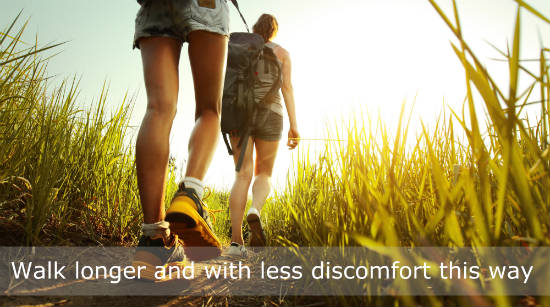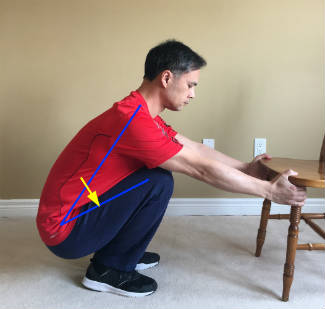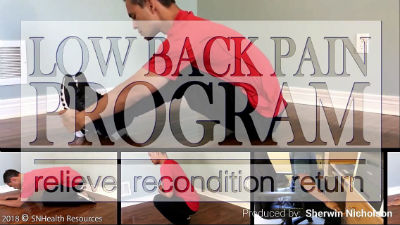2 Stretches to protect your back while you walk
![]()
Sherwin Nicholson | Updated July 1, 2025
Walking is a must and one of the most satisfying low impact exercises you can do for your health. There are some issues that you crop up when you have logged many miles of distance in your pocket. If you enjoy going out for long walks to stay fit, here are a couple stretches you should be doing to minimize pain. They will help you to walk longer distances and will allow you to experience less stiffness and fatigue during your walk.
It’s become quite an exercise of necessity now that there are increased limitations on what you can do during the pandemic. Even if you feel like you have walked as much as you can handle by now, read on to reap the benefits to prevent back pain
Walking has many great benefits. It allows you to get fresh air, to get out of the house, improve your cardio, burn off both tension and calories and many more just to name a few.
As you enjoy the benefits of walking, you are much more likely to walk for a longer time than as if you were to run or jog (depending of course on your lifestyle).
Among the numerous health benefits, there are a few physical concerns that you’ll need to stay on top of. These are related to the chronic low impact on your joints and the chronic tightening of these related joint muscles.
This article will not cover all of the areas that you should stretch, but here are at least 2 of the main ones to keep on top of each time that you go out (or at least on your treadmill) for a walk.
1.Stretching your quadriceps
For every time that your leg swings forward to step down, you are activating your quadriceps. This movement involves very little muscular effort and little range of motion. The end result is that your quadriceps will generally become shorter when you walk.
This is not usually a make or break situation to cause back pain. However, if you’re one of many people who are dealing with back issues (or are close to having them), walking may not only be one of your safer low impact choices for exercise, but it can become increasingly stressful on your spine.
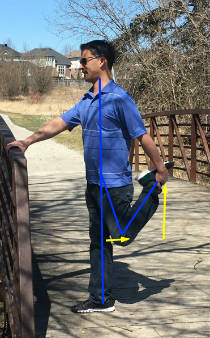
Stop to stretch your quadriceps to both improve your walk and save your back
Stretching your quads will help to:
- Re-lengthen them back to their fully relaxed state.
- Release any tightness that may unnecessarily increase an anterior pelvic tilt (pain)
- Release any pinched nerve or irritated facet joint in your spine
- Correct any improper patellofemoral tracking (knee cap tracking, pain)
- Lengthen your walking time
These are just a few of the many benefits of this stretch.
The most important aspect is that you’ll minimize any back pain that you may be prone to having.
If you are reasonably fit and have little or no symptoms of back, hip or knee pain, then it is sufficient for you to stretch your quadriceps both prior AND after you walk. I would recommend that you stretch them for at least 2-5 minutes per leg either in entire block of time or broken up. Do this both before and after.
If you believe that you are prone to suffering from lumbar pain, then in addition to stretching prior and after, quickly take the time to stop and stretch for at least 1 full minute per leg for every 30 minutes of walking.
2.Stretching your calves
Your calf muscles are also continuously activating as you step. If fact, if you are not sitting or lying down, your calf muscles are usually firing.
Most people don’t realize just how tight their calves have become until they begin to experience back discomfort that is a result of it.
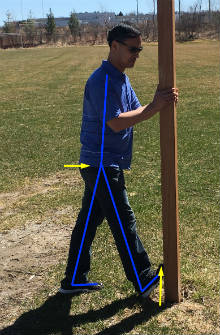
Stretching your calves are key to relieving lumbar pain
When your calves shorten from over use, this affects your ability to fully extend your leg behind you as you walk. This changes the efficiency and quality of your gait which in turn affects your back.
Short calves not only affect your walk, but also your quality of running and even how long you can stand. It is also more likely for you to suffer from a severe cramp in your calves because of it.
It’s not really the walk that is causing your pain, but the tightening of the joints along with the imbalances that they produce.
By stretching your calves vigilantly, you are protecting your back and making the most out of the quality of your walking experience. The end result is less pain, a faster walking time and a longer distance travelled. The better your ability to walk, the healthier it will be for your heart.
As you practice both of these stretches, your flexibility will improve and you will not feel as stiff as before. This improvement in your joints will help you to reduce the low impact shock on them with every step you make.
This will result in much less back, hip, knee and foot pain.
Finally, as mentioned earlier, if your calves are too tight, you may have trouble performing the Deep Squat Rest as seen below.
Short calves will cause you to fall backwards requiring you to hold on to a support. This essential exercise/test for hip and back pain is one of the most important to practice. For more help, please see Standing Pain.
Get the most out of your walking routine with the video stream!
If you would like more help with walking:

